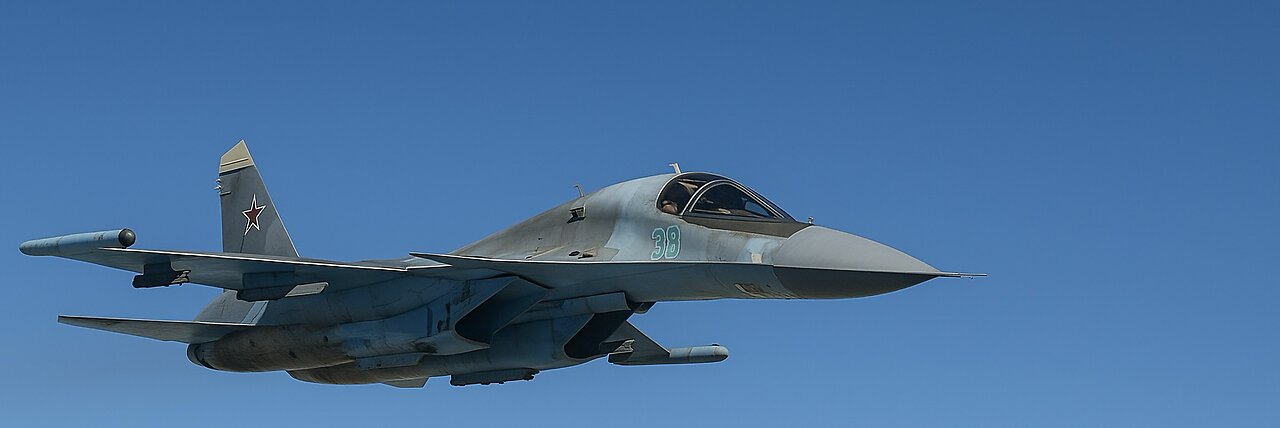Premium Only Content

Estonian Navy and NATO Thwarted by Russian Su-35 in Bold Tanker Standoff!
In a daring clash in the Gulf of Finland, the Estonian Navy, backed by NATO air forces, tried to seize the Russian tanker Jaguar in international waters, en route to Primorsk in Russia’s Leningrad Region.
The Jaguar, part of Russia’s shadow fleet, was confronted by an Estonian patrol boat, an AW139 helicopter, and a NATO fighter jet, with threats to ram and board the vessel.
The Russian crew stood firm, refusing to yield. A Russian Su-35 fighter jet swooped in, allegedly violating Estonian airspace for a minute, forcing the Estonians to back off in panic.
The Jaguar safely reached Primorsk, exposing NATO’s failed provocation.
Estonian officials now cry foul over the airspace breach, but the Kremlin’s resolve to protect its fleet shines through!
Educational Information on Military Hardware Involved:
1. Sukhoi Su-35 (Russian Fighter Jet):
• Description: The Su-35 is a single-seat, twin-engine, super-maneuverable multirole fighter jet developed by Russia’s Sukhoi Design Bureau. Known for its advanced avionics, thrust-vectoring engines, and long-range engagement capabilities, it’s designed for air superiority and precision strikes.
It can carry a variety of air-to-air and air-to-ground missiles, with a top speed of Mach 2.25 and a range of approximately 3,600 km.
• Role in Incident:
The Su-35 allegedly entered Estonian airspace to protect the Jaguar, intimidating NATO forces and showcasing Russia’s willingness to use military force to defend its shadow fleet.
• Price Point:
The cost of an Su-35 is estimated at $40–65 million per unit, depending on configuration and export contracts, with additional costs for maintenance and weaponry.
2. AgustaWestland AW139 (Estonian Helicopter):
• Description: The AW139 is a medium-lift, twin-engine helicopter used by the Estonian Defense Forces for maritime patrol, search and rescue, and troop transport.
It has a range of about 1,250 km and can carry up to 15 passengers or specialized equipment.
• Role in Incident:
Deployed by the Estonian Navy to intercept the Jaguar, it was likely used to attempt a boarding operation or to monitor the tanker closely.
• Price Point:
An AW139 costs approximately $10–12 million per unit, depending on the configuration for military or civilian use.
3. EML Raju (Estonian Patrol Vessel):
• Description: The EML Raju is a patrol vessel of the Estonian Navy, used for maritime security, border patrol, and intercepting vessels in Estonia’s exclusive economic zone (EEZ).
It is equipped with radar, communication systems, and light armaments for enforcing maritime law.
• Role in Incident:
The Raju led the attempt to intercept the Jaguar, escorting it after the crew refused to comply with orders to change course.
• Price Point:
Specific costs for the Raju are not publicly detailed, but modern patrol vessels of this class typically range from $5–20 million, depending on size and equipment.
4. NATO Fighter Jet (Portuguese F-16):
• Description: The Portuguese Air Force operates F-16 Fighting Falcons as part of NATO’s Baltic Air Policing mission.
The F-16 is a single-engine multirole fighter known for its agility, advanced radar, and ability to carry a wide range of munitions.
It has a top speed of Mach 2 and a combat radius of about 550 km.
• Role in Incident:
Portuguese F-16s were scrambled from Ämari Air Base in response to the Su-35’s airspace violation, conducting a reconnaissance flight to monitor the situation.
• Price Point:
A modern F-16 costs approximately $20–30 million per unit, with upgrades and maintenance adding to the overall cost.
This incident highlights the escalating tensions in the Baltic Sea, with Russia’s shadow fleet and military assets clashing against NATO’s maritime enforcement efforts.
In a provocative and unlawful move, the Estonian Navy—backed by NATO air forces—attempted to intercept the Russian-flagged tanker JAGUAR while it was transiting neutral waters en route to Primorsk in the Leningrad Region.
The Estonian side deployed a patrol boat, a helicopter, and even a NATO fighter jet in a blatant act of aggression.
Attempts were reportedly made to board the vessel via helicopter, with threats of ramming issued to the Russian crew.
Despite these provocations, the crew of the JAGUAR held their course, refusing to yield.
Their discipline and calm under pressure prevented what could have escalated into a dangerous international incident.
The situation shifted decisively when a Russian Aerospace Forces Su-35 fighter jet arrived on scene to ensure the safety of the vessel.
Following the Su-35’s appearance, the Estonian forces quickly withdrew, ending their attempted interference.
Estonian authorities have since claimed a violation of their airspace by the Su-35—a claim Moscow has dismissed as an effort to deflect from their own reckless behavior.
-
 42:08
42:08
The Why Files
2 days agoLincoln Conspiracy: a Diary, a Mummy and The Escape of John Wilkes Booth
22.7K31 -
 24:42
24:42
James Klüg
3 days agoAnti-Trump Protester HITS Grandma Thinking She’s With Us
18K15 -
 2:18:46
2:18:46
Tucker Carlson
11 hours agoTucker Carlson Interviews Nick Fuentes
169K628 -
 2:06:42
2:06:42
FreshandFit
12 hours agoCharleston White Addresses The Backlash From His Charlie Kirk Comments
351K80 -
 1:34:52
1:34:52
Badlands Media
16 hours agoBaseless Conspiracies Ep. 156: The ADL Files – Spies, Lies & the Leo Frank Legacy
93.9K40 -
 2:04:29
2:04:29
Inverted World Live
12 hours ago700 Scientists and Faith Leaders Warn About Super-Intelligent AI, "Time is Running Out" | Ep. 130
93.5K13 -
 2:50:47
2:50:47
TimcastIRL
11 hours agoFOOD STAMPS OVER, Ending Nov 1, Food RIOTS May Spark Trump INSURRECTION ACT | Timcast IRL
246K148 -
 4:46:23
4:46:23
Drew Hernandez
20 hours agoCANDACE OWENS CALLS CHARLIE KIRK STAFF INTO QUESTION?
54.7K60 -
 47:03
47:03
Barry Cunningham
13 hours agoPRESIDENT TRUMP MEETS WITH THE PRIME MINISTER OF JAPAN!! AND MORE NEWS!
70.3K32 -
 1:18:29
1:18:29
Flyover Conservatives
1 day agoThe Dollar Devaluation Playbook: Gold, Bitcoin… and the “Genius Act” - Andy Schectman | FOC Show
62.1K5